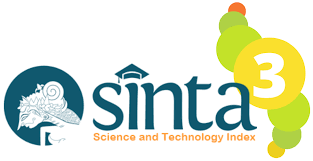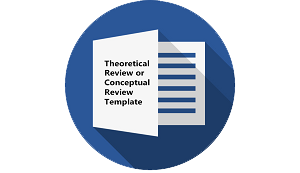PENYINGKAPAN CITRA PEREMPUAN CERPEN MEDIA INDONESIA: KAJIAN FEMINISME
DOI:
https://doi.org/10.30957/lingua.v15i2.478Keywords:
women's image, short story, and feminismAbstract
Â
 One of the female phenomena which was authored by the authors short stories in Media Indonesia is the narrative of oppressed women. The purpose of this study is to explore the image of women in short stories in the Media Indonesia. This research is descriptive qualitative research that focuses on the image of women. The approach used in this research is the feminism approach. The data were analysis techniques using heuristic and hermeneutic techniques. The results of the study indicate that there are various negative treatments experienced by women. The author used  the short stories as a representation of their images through the Media Indonesia daily. Women's image is manifested in the form of physical image, psychic, helpless, resigned to the situation, housewife, loyalty, child guard, domestic, husband's companion, and social.
Â
Â
              Â
Downloads
References
Affandi, Teguh.(2017). “Jemini dan Tuan Busu Klartenâ€. http://mediaindonesia.com. Diunduh 8/5/2018.
Altman, Meryl.(2003). “Beyond Trashiness:The Sexual Language of 1970s Feminist Fiction.â€Journal of International Women’s Studies 4(2), 7-19.
Anwar, Shoim. (2017). Tahi Lalat. http://mediaindonesia.com. Diunduh 8/5/2018.
Barker, C. (2000). Cultural Studies, Teori dan Praktik. Terjemahan oleh Nurhadi. Yogyakarta: KreasiWacana.
Catur, Kartika Pelita. (2018). Lumpur Api (Begenggek). http://mediaindonesia.com. Diunduh 8/5/2018
Darusalam, Zulfardi. (2016). Kajian Feminisme Novel Maimunah “Cinta Sang Perawan†Karya Charisma W.Inovasi Pendidikan, Jurnal IlmiahPendidikan FKIP Universitas Muhammadiyah Sumatera Barat, 2(15), 18-25.
Hayati, Yenni. (2012). “Representasi Ketidakadilan Gender†dalam Cerita dari Blora Karya Pramodya Ananta Toer: Kajian Feminisme.Journal Attavisme, 15 (2),163-176.
Kartika, Sofia. (2003). Kritik Sastra Feminis: “Sebuah Jalan Menuju Kesetaraan Gender Melalui Dunia Sastraâ€. Jurnal Perempuan. No. 38. [halaman]
Katoria, M. (2011). “woman and Sexuality: Gender-Class Interface in Selecetd Short of Ismat Chugtai. The criterion: An international journal in the English, 2(4), 1-9
Madsen, Deborah L. (2000). “Feminist Theory and Literary Practice ‘’.London: Pluto Press.
Martha, Nia Ulfa. (2010). “Citra Istri Dalam Kumpulan Novelet Dunia Tnpa Warna†Karya Mira W (sebuah Kajian Satra Feminis): FKIP Unikal.Journal Muwazah, 2(1), 225-234.
Ma’Simah, Lift Aanis. (2012).“Teks-teks keislaman dalam kajian feminisme muslimâ€: Telaah metodologis atas pandangan feminis muslim terhadap penciptaan dan kepemimpinan perempuan.Journal SAWWA, 7(2), 67-90.
Masyari, Muna. (2018). “Sangkar Perkawinanâ€.http://mediaindonesia.com. Diunduh 8/5/2018
Nafiyah, Khifdiyatun & Hari Bakti. (2016). “Permasalahan Perempuan†dalam Kumpulan Cerpen Malam Sepasang Lampion Karya Triyanto Triwikromo.Seloka: Jurnal Pendidikan Bahasa dan Sastra Indonesia, 5(1), 21-29.
Negari, Ni Putu Ekatini. (2015).â€Perempuan Dan Ritual Guru Piduka†dalam Cerpen “Surat Dari Puri†Karya Widiasa Keniten. Jurnal Aksara. 27, 107-112.
Pekasih, Ganda. (2017). “Mata yang Menyiksaâ€.http://mediaindonesia.com. Diunduh 8/5/2018.
Puboasri, Gali D. Kundharu S. dan Suyitno S.( 2017). “Karakter dalam Preman, Antologi Cerkak Karya Tiwiek S.A. dan Implikasinya terhadap Pembelajaran Bahasa Jawa.†Lingua, 14(2), 195-225.
Putri, Dyah P.K. dan Sri Lestari. (2015). “Pembagian Peran dalam Rumah Tangga pada Pasangan Suami Istri Jawa.†Surakarta: Universitas Muhammadiyah Surakarta. Journal Penelitian Humaniora, 16(1), 72-85.
Priyatna, Aquarini. (2018). “Feminist Voice in the Works of Indonesian Early Woman†Writers: Reading Novels and Short Stories by Suwarsih Djojopuspito.â€Journal of International Women's Studies. 19 (2), 230-243.
Quawas, Rula. (2014). “Pinched Lives and Stolen Dreams in Arab Feminist Short Storiesâ€.journal of International Women’s Studies, 15(1), 54-66.
Rajeswari, V. 2018.â€Gender Discrimination and Feminist Concern in Shashi Deshpande’s A Matter of Time.â€The Criterion: An International Journal in English, 9(2), 9-15.
Rose, Carol, M. (1990). “Property as Storytellingâ€: Perspectives from Game Theory, Narrative Theory, Feminist Theory. Yale Journal of Law & the Humanities. 2(37), 3-22.
Santosa, Puji. (2009). “Perlawanan Bangsa Terjajah Atas Harkat dan MartabatBangsaâ€: Telaah Postkolonial Atas Tiga Sajak Indonesia Modern. Atavisme:Jurnal Ilmiah Kajian Sastra, 12(2), 147-156.
Saptawuryandari, Nurweni. (2016). “Perempuan yang Termarginalkan†dalam Cerpen “Menuju Kamar Durhaka“ dan “Berita dari Parlemen†Karya Utuy Tatang Sontani. Aksara, 28(1), 39-48.
Sholihah, Rizki Amaliya. (2013). “Problematika Perempuanâ€: Presentasi Kekerasan Gender Pada Cerpen “Lintah†dan “Menyusu Ayah†Karya Djenar Maesa Ayu. Sirok Bastra, 1(1)
Sugihastuti, dan Suharto. (2000). “Kritik Sastra Feminiâ€s: Teori dan Aplikasinya.Yogyakarta: Pustaka Pelajar.
Sugihastuti. (2002). “Teori dan Apresiasi Sastraâ€.Yogyakarta : Pustaka Pelajar
Thakar, Daxa. 2011. “ Feminist Perspectives in the Novel Yajnaseni of Pratibha Rai.†The Criterion: An International Journal in English, 2(4), 1-8.
Vardani, Eka Nova Ali. 2018. “Peranan Nilai-Nilai Karakter Islam dalam Cerpen Aku Ingin Emak Masuk Surga Karya Maidaye Laila Yane.†Jurnal Belajar Bahasa: Jurnal Ilmiah Program Studi Pendidikan Bahasa dan Sastra Indonesia, 3(1),23-37.
Wardani, Ririen dan Yuniar P.A.(2016). “Pemikiran dan Aksi Feminisme Tokoh Perempuan dalam Novel Mataraisa Karya Abidah El-Khaliqyâ€: Journal Indonesian Language Education and Literature, 2(1), 12-21.
Windiyarti, Dara. (2008). “Pemberontakan Perempuan Bali Terhadap Diskriminasi Kelas dan Genderâ€: Kajian Feminis Novel Tarian Bumi Karya Oka Antara. Yogyakarta: Universitas Gajah Mada. Journal Humaniora, 20(3), 286-294.
Yasin, Muhammad Dhimas. 2016. “Kajian Stilistika dalam Teks –Mutawassimin sebagai Bahan Pembelajaran Mata Kuliah Wajib Stilistika.†Lingua, 13(2):195-206.
Yin, Kelly. (2017). Post/Feminist Impulses: “Neoliberal Ideology and Class Politics in Annie Wang’s The People’s Republic of Desire†(2006). Journal of International Women’s Studies, 18(3), 66-79.
Youssef, Suwaed Muhammad. (2017). “The Exploitation of Women and Social Change in the Writing of Nawal El-Saadawi.†Journal of International Women’s Studies, 18(4), 233-246.
Zakarriya, Jihan. (2017). “Sexual Identity and Disturbed Intellectual Female Terrain in Jâ€. M. Coetzee’s Foe and Jabra Ibrahim Jabra’s The Ship: An Ecofeminist Reading.â€Journal of International Women’s Studies, 18(2), 219-232.
Downloads
Published
How to Cite
Issue
Section
License
Authors who publish with this journal agree to the following terms:
- Authors retain copyright and grant the journal right of first publication with the work simultaneously licensed under a Creative Commons Attribution-ShareAlike 4.0 International License that allows others to share the work with an acknowledgement of the work's authorship and initial publication in this journal.
- Authors are able to enter into separate, additional contractual arrangements for the non-exclusive distribution of the journal's published version of the work (e.g., post it to an institutional repository or publish it in a book), with an acknowledgement of its initial publication in this journal.
- Authors are permitted and encouraged to post their work online (e.g., in institutional repositories or on their website) prior to and during the submission process, as it can lead to productive exchanges, as well as earlier and greater citation of published work (See The Effect of Open Access).















